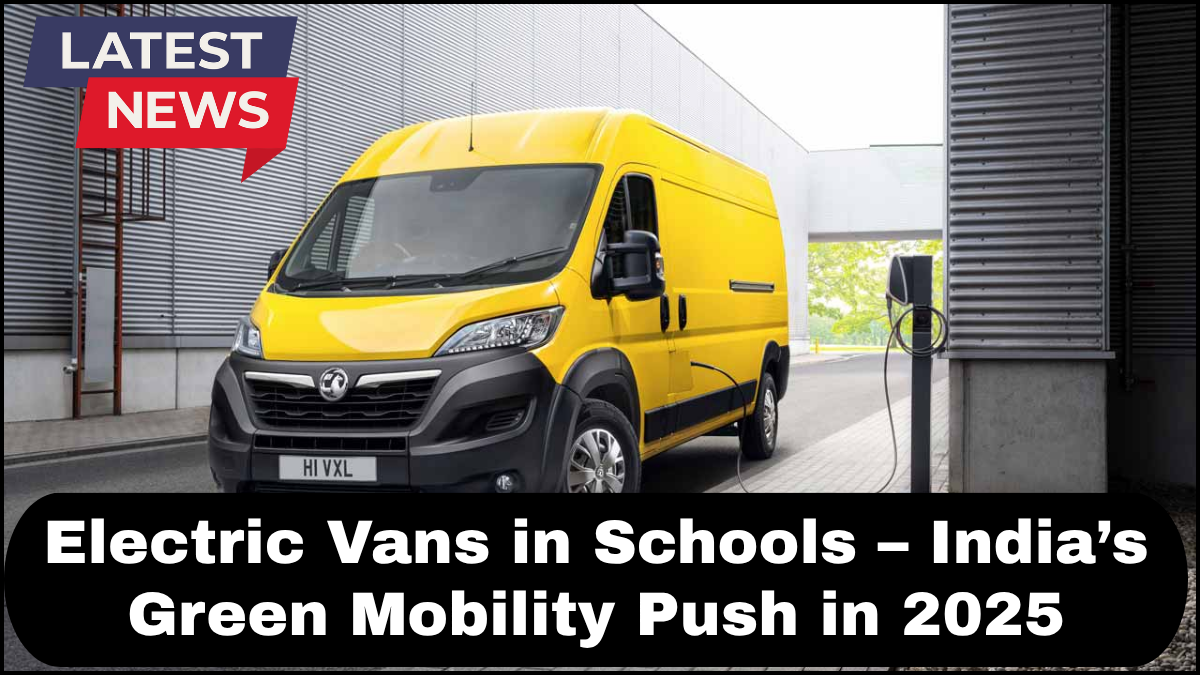As India accelerates toward a cleaner and more sustainable future, the education sector is emerging as an important player in the green mobility revolution. A significant step in this direction is the adoption of electric vans for student transport, reshaping how students commute to school. In 2025, this movement is gaining momentum, aligning with national sustainability goals and the broader aim of carbon neutrality.

Why Schools Are Going Electric
Schools are recognizing their role in promoting environmental responsibility. Traditional diesel and petrol vans contribute to urban pollution and respiratory issues in children. By switching to electric vans, schools are not just reducing their carbon footprint, but also setting a powerful example for students about conscious, eco-friendly choices.
This transformation is driven by multiple factors:
- Government Support: Under FAME II (Faster Adoption and Manufacturing of Hybrid and Electric Vehicles) and state-level EV policies, subsidies and tax incentives are making it economically viable for institutions to switch.
- Cost Efficiency: Although initial acquisition costs may be higher, electric vans require less maintenance and have lower operational expenses in the long term.
- Health Benefits: Reduced exposure to tailpipe emissions around school premises improves air quality and safeguards children’s health.
EV Vans for Student Transport: How the Transition Works
Implementing EV vans for student transport involves a multi-step process:
- Infrastructure Setup: Charging stations are being installed at schools, often with solar backup to enhance sustainability.
- Fleet Partnerships: Schools are partnering with EV fleet operators or purchasing electric vans directly from manufacturers like Tata Motors, Mahindra Electric, and Omega Seiki.
- Training & Awareness: Drivers are trained to operate electric vehicles safely, and awareness sessions for students and parents help ensure smooth adoption.
Several cities such as Bengaluru, Delhi, and Pune have already piloted these efforts. For instance, a Delhi-based school consortium recently transitioned 60% of its fleet to electric, reporting a 40% drop in monthly fuel costs.
Technological Advancements Driving the Shift
The 2025 landscape for green mobility in schools is benefiting from rapid tech advancements:
- Improved Battery Life: New lithium-ion battery models offer extended ranges, making daily school routes feasible.
- Smart Fleet Management: Real-time tracking, geo-fencing, and automated maintenance alerts enhance operational safety and reliability.
- Vehicle-to-Grid Integration: Some advanced school fleets can even feed unused electricity back into the grid, turning schools into energy hubs.
Challenges and Solutions
Despite the progress, several challenges remain:
- High Initial Costs: Although costs are declining, many smaller schools find it hard to make the upfront investment.
- Charging Infrastructure: Rural and semi-urban areas still face gaps in EV charging coverage.
Solutions include public-private partnerships, pooled procurement models, and government-funded grants aimed specifically at educational institutions. Additionally, corporate CSR programs are increasingly supporting school EV initiatives.
The Bigger Picture: Educating a Green Generation
The switch to electric vans isn’t just about transport. It’s a lesson in sustainability. When students see their school taking concrete steps toward reducing emissions, it fosters a culture of responsibility.
Green mobility in schools is helping shape a generation that understands the value of eco-conscious living. Environmental clubs are incorporating EV technology into their projects, and curriculum updates are introducing the science behind electric mobility.
FAQs
Q1: Are electric vans safe for student transport?
Yes. EV vans are equipped with advanced safety features including speed governors, GPS tracking, and reinforced body structures. Many are specifically designed for school use.
Q2: How can a school afford electric vans?
Schools can access subsidies under FAME II, apply for green transport grants, or partner with EV leasing companies to minimize upfront costs.
Q3: What is the average range of an electric school van?
Most EV vans designed for school use offer ranges between 120 to 250 kilometers on a single charge, which is adequate for daily round trips.
Q4: Are there any schools in India already using EV vans?
Yes. Schools in Delhi, Mumbai, Hyderabad, and Bengaluru have started integrating electric vans into their fleets as part of green mobility programs.
Q5: How does this shift impact the environment?
Electric vans eliminate tailpipe emissions, reducing local air pollution and greenhouse gas emissions, contributing significantly to cleaner urban environments.
click here to learn more